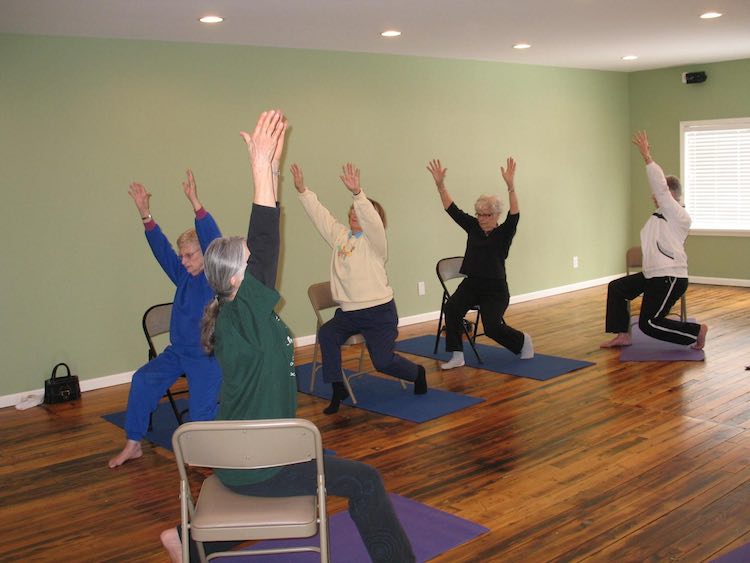For the millions of older adults who suffer from osteoarthritis in their lower extremities (hip, knee, ankle or foot), chair yoga is proving to be an effective way to reduce pain and improve quality of life while avoiding pharmacologic treatment or adverse events.
A new study, conducted by researchers at Florida Atlantic University, is the first randomized controlled trial to examine the effects of chair yoga on pain and physical function in older adults with osteoarthritis.
RELATED: Check Out This Yoga Studio Made Entirely of Salt
Results from the study found that participants in the chair yoga group, compared to those in the health education program, showed a greater reduction in pain and pain interference during their sessions, and that reduction in pain interference lasted for about three months after the 8-week chair yoga program was completed. The 8-week chair yoga program also was associated with reductions in fatigue and improvement in gait speed during the study session, but not post session.
“With osteoarthritis-associated pain, there is interference in everyday living, limiting functional and social activities as well as diminishing life enjoyment,” said Juyoung Park, Ph.D., co-author and co-principal investigator of the study. “The effect of pain on everyday living is most directly captured by pain interference, and our findings demonstrate that chair yoga reduced pain interference in everyday activities.”
Regular exercise has proven to help relieve osteoarthritis pain, however, the ability to participate in exercise declines with age, and many dropout before they can even receive benefits. Although the Arthritis Foundation recommends yoga to reduce joint pain, improve flexibility and balance, and reduce stress and tension, many older adults cannot participate in standing exercises because of lack of muscle strength, pain and balance as well as the fear of falling due to impaired balance. Chair yoga is practiced sitting in a chair or standing while holding the chair for support, and is well suited to older adults who cannot participate in standing yoga or exercise.
MORE: Quiet Time Program Brings Radical Improvement To Schools Worldwide
“Currently, the only treatment for osteoarthritis, which has no cure, includes lifestyle changes and pharmacologic treatments that are not without adverse events,” said Ruth McCaffrey, co-author and emeritus professor in FAU’s College of Nursing. “The long-term goal of this research is to address the non-pharmacologic management of lower extremity osteoarthritis pain and physical function in older adults, and our study provides evidence that chair yoga may be an effective approach for achieving this goal.”
The overall goal of this interdisciplinary program is to decrease pain, and improve physical and psychosocial functions of elderly individuals with osteoarthritis who are unable to participate in other exercise and yoga programs.
(Source: Florida Atlantic University)
It’s Easy As Downward Dog: Click To Share – Photo by Florida Atlantic University




















